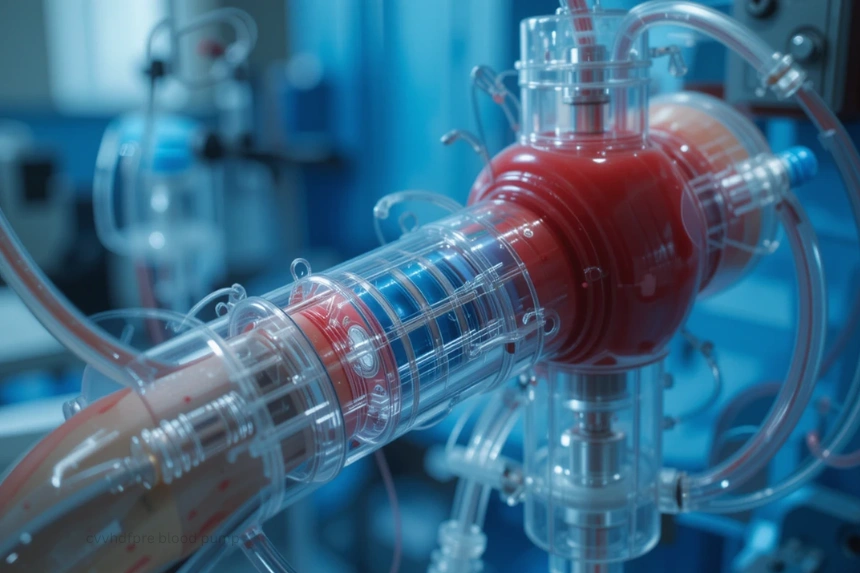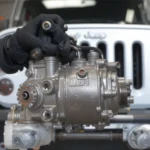Introduction to CVVHDFPRE Blood Pump
The CVVHDFPRE blood pump is an essential element in advanced renal replacement therapies, particularly in continuous veno-venous hemodiafiltration with pre-dilution (CVVHDFPRE). This specialized pump plays a critical role in modern intensive care units (ICUs) by facilitating the safe and efficient removal of toxins and excess fluids from critically ill patients suffering from acute kidney injury (AKI). As an integral part of the extracorporeal circuit, the blood pump ensures consistent blood flow, preventing clotting, and minimizing hemolysis, which is vital for patient safety and therapy effectiveness.
What is CVVHDFPRE?
Before delving into the specifics of the blood pump, it is essential to understand what CVVHDFPRE entails. A hybrid renal replacement treatment, CVVHDFPRE combines diffusion (hemodialysis) and convection (hemofiltration). The “PRE” indicates pre-dilution, where a sterile replacement fluid is infused into the blood before it passes through the filter. This approach helps reduce the hematocrit, decreasing blood viscosity and improving filter lifespan while allowing efficient solute removal.
This therapy is preferred in unstable patients because it provides gentle, continuous clearance of waste products and excess fluids, reducing the risk of hemodynamic instability—a common concern in critically ill patients.
Significance of the Blood Pump in CVVHDFPRE
The blood pump is arguably the heart of any extracorporeal therapy system, including CVVHDFPRE. Its primary role is to draw blood from the patient, propel it through the filter and dialysis machine, and return it safely into the bloodstream.
Key functions of the CVVHDFPRE blood pump include:
Flow Regulation: Ensuring a precise blood flow rate (usually between 150-300 mL/min) for optimal clearance without damaging blood cells.
Hemodynamic Stability: Maintaining steady blood flow helps prevent fluctuations that could compromise patient stability or cause circuit clotting.
Minimization of Hemolysis: Designing the pump to avoid excessive shear stress prevents destruction of red blood cells, which is critical during prolonged therapy sessions.
Compatibility with the Circuit: Compatibility with various tubing sizes and connection interfaces enhances flexibility in different clinical settings.
Types of Blood Pumps Used in CVVHDFPRE
Modern blood pumps in CVVHDFPRE systems are predominantly roller pumps and diaphragm pumps, each with unique advantages:
Roller Pumps
Mechanism: Comprise rollers that compress flexible tubing to propel blood forward.
Advantages: Reliable, simple operation, and capable of delivering consistent flow rates.
Disadvantages: Potential for higher shear stress, which can lead to hemolysis if not properly managed.
Diaphragm Pumps
Mechanism: Use reciprocating diaphragms to create a vacuum and push blood.
Advantages: Handle blood cells carefully and with less shear stress to lessen the risk of hemolysis.
Disadvantages: more costly and sophisticated than roller pumps.
The choice of pump depends on patient needs, clinical protocols, and the technology incorporated into the dialysis machine.
Features to Consider in CVVHDFPRE Blood Pumps
When selecting or evaluating a blood pump for CVVHDFPRE therapy, several features are crucial:
Flow Accuracy: Precise control of flow rates to match therapy requirements.
Safety Alarms: Detection of flow interruptions or circuit problems.
Ease of Use: Interfaces that are easy to use for fast monitoring and modifications.
Compatibility: Ability to integrate seamlessly with the dialysis machine and circuit components.
Sterility and Hygiene: Design considerations that facilitate cleaning and minimize infection risks.
Advances in CVVHDFPRE Blood Pump Technology
Recent innovations have focused on enhancing the safety, efficiency, and biocompatibility of blood pumps:
Smart Pump Controls: Integration of electronic feedback mechanisms for real-time adjustments.
Reduced Shear Stress Designs: Modifications in pump mechanisms to lower hemolysis risk.
Minimal Circuit Prime Volume: Smaller pump components to reduce blood loss during setup.
Automated Monitoring: Incorporating sensors for continuous flow and pressure monitoring, alerting clinicians to potential complications promptly.
Importance of Proper Maintenance and Calibration
To maximize the lifespan and performance of the CVVHDFPRE blood pump, routine maintenance and calibration are vital. This includes periodic checks for leaks, wear and tear of tubing, and ensuring the accuracy of flow sensors. In addition to protecting patient safety, proper maintenance increases the longevity of pricey equipment.
Conclusion: The Essential Role of CVVHDFPRE Blood Pump
The CVVHDFPRE blood pump stands as a cornerstone in effective renal replacement therapy for critically ill patients. Its design and operation are carefully tailored to ensure safe, stable, and efficient blood processing. As technology continues to evolve, future developments in blood pump systems promise even greater safety, precision, and patient comfort.
In critical care, where every second counts, the reliability and performance of the blood pump can significantly influence patient outcomes. Understanding its function and selecting the appropriate pump are crucial steps in delivering high-quality, life-saving therapy.



